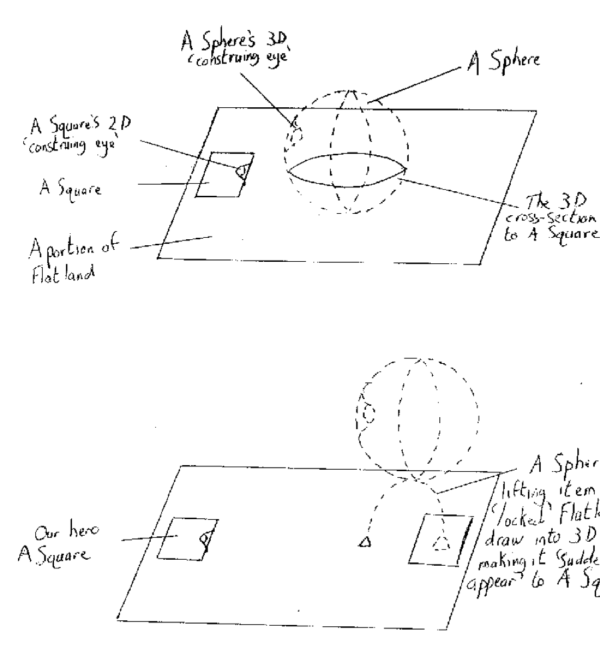 Spring is slowly stretching out its green tipped limbs here in Minnesota. With the new season comes renewed curiosity, and that translates to everything from daily decisions to my book selections. I think you’ll see that echoed in today’s staff round-up, too. What are you reading that is fulfilling your curiosity these days?
Spring is slowly stretching out its green tipped limbs here in Minnesota. With the new season comes renewed curiosity, and that translates to everything from daily decisions to my book selections. I think you’ll see that echoed in today’s staff round-up, too. What are you reading that is fulfilling your curiosity these days?
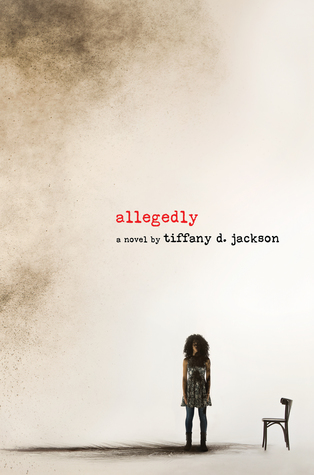 Allegedly by Tiffany D. Jackson (HarperCollins, January 2017)
Allegedly by Tiffany D. Jackson (HarperCollins, January 2017)
Reviewed by Cassidy
Mary Addison brutally murdered a baby. Allegedly. At least, that’s what the judge decided when he sentenced her to “baby jail” when Mary was just nine years old. Now Mary is 15, and though she’s stuck in a group home with a crew of her violent and volatile peers and a case officer who couldn’t care less, she’s determined to make the most out of her life. . . until she becomes pregnant with her boyfriend, Ted. Mary is suddenly faced with a choice: stay in the system and give up her baby, or tell the real truth of what happened that night that three-month-old Alyssa lost her life. This book is one part thriller and one part searing indictment of the prison industrial complex (think Orange is the New Black meets Walter Dean Myers meets The Bluest Eye), rattling along at breakneck pace until the very last page. Oh, and no spoilers, but if you’re a big fan of twists, this book contains the be-all, end-all of surprise endings.
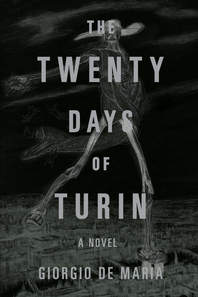 The Twenty Days of Turin by Giorgio De Maria, translated by Ramon Glazov (Liveright Books, 2017)
The Twenty Days of Turin by Giorgio De Maria, translated by Ramon Glazov (Liveright Books, 2017)
Reviewed by Josh
I’m caught between two books, one nearly finished and one nearly started. Giorgio De Maria’s The Twenty Days of Turin (translated by Ramon Glazov) is a weird, scary story that combines a strange, Borges-esque Library, a pseudo-Woolfian collective, temporary psychosis, and a narrator trying to uncover how all of this strangeness disappeared into the past. It’s a small book, and I’m savoring every little bit of it. Once I’m out of this nightmare vision of Turin, I’ll leap into Yoon Ha Lee’s Hugo-nominated science fiction novel Ninefox Gambit, about which I know very little but for which I am totally excited!
 The Soul of an Octopus: A Surprising Exploration into the Wonder of Consciousness by Sy Montgomery (Atria Books, 2016)
The Soul of an Octopus: A Surprising Exploration into the Wonder of Consciousness by Sy Montgomery (Atria Books, 2016)
Reviewed by Taylor
Despite my fascination with octopuses, I didn’t know much about them before reading this book. First of all, I learned that it’s octopuses, not octopi. I learned that octopuses have complex nervous systems that dominate the arms, where they have an excellent sense of touch—and taste. I learned that octopuses taste with their suckers, passing food from arm to arm to mouth, where they have a sharp beak like a parrot. I learned that there’s still so much more to discover about these intelligent, playful, problem-solving, color-changing, shape-shifting escape artists.
Intrigued by octopuses, author and naturalist Sy Montgomery makes regular visits to the New England Aquarium, followed by a sudden ambition to get scuba certified, all along the way meeting people who share her unexpected love for the eight-armed creatures. In The Soul of an Octopus, Montgomery chronicles the observations and intimate encounters she shared with each octopus she came to know, weaving together thoughtful, moving stories of her friends—humans and underwater aliens alike—while exploring the question of consciousness and the remarkable connections made between species.
 Shade the Changing Girl #1-7 by Cecil Castellucci, Marley Zarcone, et al (DC Comics/Young Animal, 2017)
Shade the Changing Girl #1-7 by Cecil Castellucci, Marley Zarcone, et al (DC Comics/Young Animal, 2017)
Reviewed by Aaron
Take one birdlike alien from a parallel dimension. See her adopted by the most boring parents her sci-fi world has ever known. Then drop her
into the body of a hateful (and hated) Earthling teen. This is the formula that Shade the Changing Girl is built on. The series inherits a name and aesthetic from comics that positively ooze the times they were made: Steve Ditko’s psychedelic Shade the Changing Man from 1978 and 1990’s mad, bad, and dangerous-to-know reboot, the Changing Girl incorporates its forerunners’ lore without being bogged down by it; in fact, Shade queers just about everything: sci-fi, adoption, sexuality, family, and home. It’s a comic about the people that exist between and outside of accepted norms. Shade’s world is a Guillermo del Toro fantasy colored by Lisa Frank, and I can’t get enough.
 Abandon Me: Memoirs by Melissa Febos (Bloomsbury, 2017)
Abandon Me: Memoirs by Melissa Febos (Bloomsbury, 2017)
Reviewed by Wren
Melissa Febos visited the Loft (where I work) last month. I hadn’t read any of her work prior to her visit, but let me tell you: I have officially reached fan-girl status. When researching prior to her visit, I came across this essay, “The Heart-Work: Writing About Trauma as a Subversive Act” and immediately signed up for her full-day short essay workshop and bought Abandon Me. I also found out via Twitter that not only do we share the same first name (ICYMI, my real name is Melissa, not Wren), but we also share the same Myers Briggs classification of ENFJ. YUP, FAN GIRL, HI. One thing (out of many things) Febos said in the workshop that really stuck with me was (paraphrased): tell your story with enough specificity that it reveals a universal truth. Her essays and memoirs do exactly this. Febos has a very different background than my own, but each essay resonates with a thread of universality within my own experiences. The essays in this collection juxtapose the legacies left by both her birth father and the sea captain father who raised her, and delve further into her relationships with drug addiction, love, and other familial relationships. Abandonment is an overarching theme that runs throughout these essays, and Febos doesn’t shy away from the raw, tender spots of her own story. This is a beautifully lyric, heart-opening exploration of her life and the universality of vulnerability.
What We’re Reading: Poetic Scientifica

 Poetic Scientifica by Leah Noble Davidson (University of Hell Press, 2013)
Poetic Scientifica by Leah Noble Davidson (University of Hell Press, 2013)
The title drew me in. Science, it seems, is endangered by the current administration’s denial and de-funding, so I’ve been longing for its textured diction and conjecture. Davidson denied my expectation, but offered something more broad and thought-provoking than just scientific vocabulary.
From the very beginning in a section titled “Nobody Reads the Introduction,” Davidson reminds the reader of the interplay between language and meaning and also that meaning is subjective and constructed by language and experience. She puts forth a hypothesis that the book goes on to test: “It is possible to give a poem deeper meaning by abstractly defining the dialect of the words of which it is composed.” In one sense the book is a biome rich with nutrients which feed the ‘organism,’ or the opening poem. The first poem is placed before the table of contents and each word of the poem is used as a title for every poem in the book. Therefore, each word in the opening poem is a cell made up of the linguistic molecular structures and associations that make up each corresponding poem in the book. Davidson contextualizes her own dialect, as it were, and creates a scaffolding system for the reader to climb deep into the underbelly of the opening poem.
Right away, I wondered how Davidson would write satisfying poems for the articles in the opening poem. How do you write a good poem a title like “the” or “so”? Poetic Scientifica answers that question again and again. In the opening poem, the word ‘into’ is repeated three times, so the book contains three poems titled “into.” These are three of my favorite poems in the book; they’re about abuse and violence, but the voice is both direct and distant, giving the reader the impression that the poem is examining a wound with an objective hand. These poems engage the reader viscerally while creating a shared meaning of the title word between the reader and the poet. The three poems titled “into” build on each other, and by the end of the book, I feel more intimately connected to the poet than I ever would have expected.
Formally, the poems vary in this collection. While some poems employ end-stop, others ignore the line altogether in a prose-like manner. I would not recommend this book as a model of strong line breaks, and I feel that the voice comes out most strongly when Davidson lets language resonate on a sentence level. In “have,” a prose poem, she creates tension with long sentences and minimal punctuation:
The depression begins with you fingering hand towels you can’t afford in a store you’ll never remember the name of because you’re consumed with how they remind you of the ones you dried the dishes with when you quit working to stay home with the baby while he started his career at the job that you got for him
In other instances, reading Davidson’s imagery is almost like visual hallucination. “So you are in a boat without language,” “Tell” begins, “and I have a stick for a mouth.” From here the speaker gesticulates wildly within this reality. The poem is playful and inscrutable because we can’t imagine spaces that have no language, but the poem also carries emotional power. And the ending lines carry so much more weight than a flippant experiment in constructionism: “there are no words in your head. // Just a picture, a moving picture of what we won’t call water and a loss for something not a stick.” Davidson’s playfulness comes out in other poems as well such as “person” which is just as fun while less cerebral.
Harold the Zombie is picking his wounds again—
the mood must feel as gray and distant.
Jennifer asks him if he feels like
a pitted olive cheese. “No,
only brains.”
Harold wants to be a vegan, wants
to quite smoking, and learn Pilates He wants to
watch less TV, but it keeps him off the streets.
out of people’s heads,
out of his own head
In my opinion, a few poems are less hard-hitting, in and of themselves, than others; however, the project of the book answers for itself and for each poem too. Each page is necessary to test the hypothesis, and that’s what makes this book a satisfying read.
Again, in light of this political moment, I appreciate this book for the way that it draws attention to the unwieldy power of words to contain multitudinous meaning. For example, think of the how the word “great” connotes vastly different meanings in the phrase: “Make America great again.” Davidson takes words and shows the reader how each contains a world, a color, a story. After reading this book, certain words will seemingly never be the same for me now that I’ve experienced these dialectical expansions. Just for fun, I put a handful of those words together into a sentence: Burrito your brains into the hallway for business ballet. Now that sentence may or may not mean anything to you, but I bet if you read Poetic Scientifica, it will mean a great many things.
Can you think of any words that pack a punch for you? Try writing a poem that explores a word other people might never think twice about.
 Want to know what I love most about these round-up posts? I love how my “must read” list expands into genres and styles of writing that I wouldn’t otherwise have discovered on my own. One of the ways I’ve been coping with the current political climate is to read as much as possible, and as widely as possible. I believe that by immersing ourselves in different perspectives (which books can do so well), we are inspired to grow, practice awareness, and find compassion for others. I hope you, dear reader, will also find new perspectives in whatever you’re reading, and that your “must read” pile of books is ever-growing.
Want to know what I love most about these round-up posts? I love how my “must read” list expands into genres and styles of writing that I wouldn’t otherwise have discovered on my own. One of the ways I’ve been coping with the current political climate is to read as much as possible, and as widely as possible. I believe that by immersing ourselves in different perspectives (which books can do so well), we are inspired to grow, practice awareness, and find compassion for others. I hope you, dear reader, will also find new perspectives in whatever you’re reading, and that your “must read” pile of books is ever-growing.
 We Are the Ants by Shaun David Hutchinson (Simon + Schuster, January 2016)
We Are the Ants by Shaun David Hutchinson (Simon + Schuster, January 2016)
Reviewed by Cassidy
The world is ending, and only one person can stop it. Sixteen-year-old Henry Denton is abducted by aliens and given two choices: press a big red button and save the world, or do nothing and watch everyone die in one hundred and forty-four days. It should be an easy decision. But after Henry’s boyfriend commits suicide and leaves behind no note or explanation, Henry isn’t sure the planet deserves to be saved. An in-depth exploration of grief and how we choose to survive, We Are the Ants is a brilliant, unique, compelling book that I never knew I needed. The book lives in a nebulous space between contemporary and science-fiction. Though Henry is very sure the aliens (or sluggers, as he calls them) are real, the reader is left questioning if they’re actually there, or a manifestation of a deeper trauma.
 Here by Richard McGuire (Pantheon Graphic Novels, 2014)
Here by Richard McGuire (Pantheon Graphic Novels, 2014)
Reviewed by Taylor
Richard McGuire’s graphic novel Here takes place in the same location at different times, going back and forth over billions of years. Through stunning full-page spreads and overlapping frames marked by the year, the reader simultaneously sees the living room of a 20th century house spanning generations in one family, the hunting grounds for Native Americans in the 1600s, the first colonial settlers, the glaciers of the past, the floods of the future, and everything in between. More than being a story with a defined plot, Here is a beautiful piece of art meant to highlight our undeniable impermanence in this world.
 Azumanga Daioh by Kiyohiko Azuma (Yen Press 2010)
Azumanga Daioh by Kiyohiko Azuma (Yen Press 2010)
Reviewed by Aaron
I’m currently reading two too-long books, so while I struggle with those, I’ve been cramming in lots of quick reads. The best of them has been Kiyohiko Azuma’s Azumanga Daioh, a long-running comic strip about girls in high school. Each four-panel strip is a strange delight, weaving through school activities, drunken teachers, bizarre dream sequences, and quiet moments of delight in cats. The characters are multitudinous and varied, so it never feels like the book is showing a “right way” to be a high school girl. The best moments of the strip come from the characters’ failures, especially when shown against the persistence of life and friendship despite those failures.
Well, no, the best parts are the trippy dream sequences with talking ponytails and mutant cat dads. But the friendship stuff is good too.
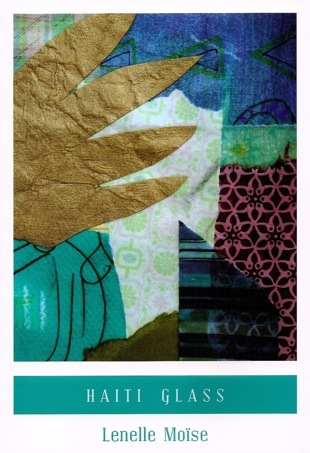 Haiti Glass by Lenelle Moïse (City Lights 2015)
Haiti Glass by Lenelle Moïse (City Lights 2015)
Reviewed by Wren
Do you ever have a poem stop you in your tracks? That’s how I first encountered Lenelle Moïse’s work. I get the “Poem of the Day” emailed to me from Poetry Foundation, and when her poem “quaking conversation” showed up in my inbox, it shook me to my core. I immediately ordered Haiti Glass from City Lights and devoured it in a single sitting. The collection is a complex, raw love letter to Haiti and the people that live there. It’s at once heartbreaking and joyful, fierce and tender. Moïse deftly wields language to expose and surrender to the complexities of this living, breathing portrait of Haiti. And so, I’ll leave you with the last stanza of “quaking conversation”, the poem that first sparked something in me as a reader:
come sit, come stand, come
cry with me. talk.
there’s much to say.
walk. much more to do.
Happy reading, and listening, and doing, folks.
What We’re Reading: Jerusalem, Part 1

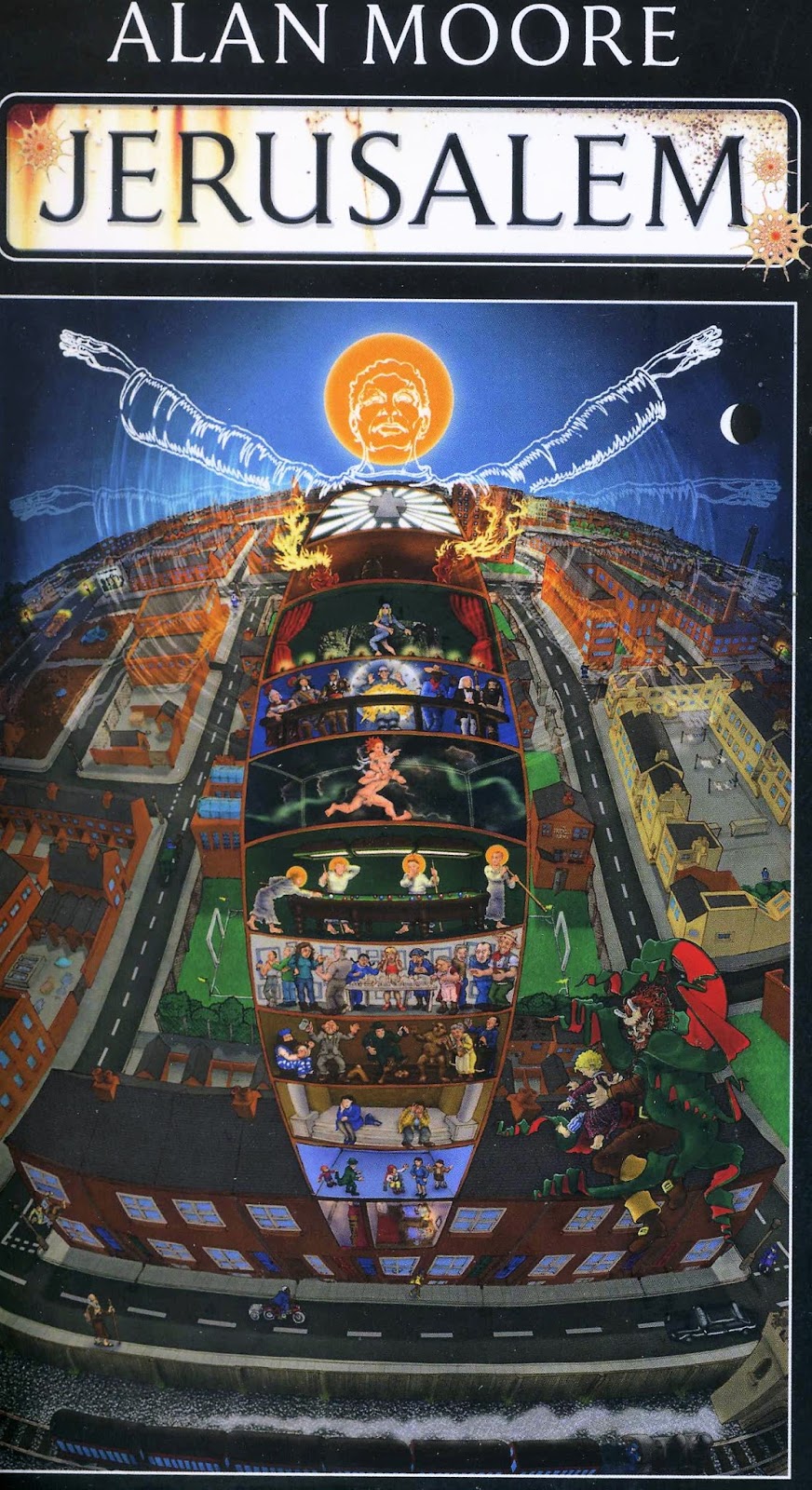 One of Hazel & Wren’s New Year resolutions is to find new ways to engage with and review books. You’ve already seen our review roundups, and here’s another grand experiment: a yearlong, co-reviewed readalong of Alan Moore’s newest novel, Jerusalem.
One of Hazel & Wren’s New Year resolutions is to find new ways to engage with and review books. You’ve already seen our review roundups, and here’s another grand experiment: a yearlong, co-reviewed readalong of Alan Moore’s newest novel, Jerusalem.
Jerusalem is 1,200 pages of magical realism, historical fiction, and experimental prose about Northampton, England. Each month, we’ll read approximately 100 pages and post a short roundtable discussion. And the coolest part? You can read along and join the discussion! Let’s pick this beast of a book apart.
This month, Josh and Aaron will be discussing the first 97 pages. With 1,100 pages to go, there’s still time for you to grab a copy and join in.
Aaron: A majority of the first 100 pages is about members of the Vernall family across generations. One restores church frescoes in the late 19th century. Others paint and dream in the modern day. All of them suffer from mental illness.
First of all, it feels like this is going to be a book about perspective. Alma’s opening scene is about architecture and angles, and she thinks about the family madness in metaphor, pondering those ancestors who’ve gone round the turn, the bend, the twist, effectively disappearing from view. Mental illness makes someone invisible, no longer able to be perceived in traditional ways.
Josh: It’s a curious way to start a book, right? It at once lets us know the scope of this thing he’s given us, the truly omniscient attempts at narration. It’s as though Moore wants to be clear with us right from the get-go: this book will shy away from no consideration of place, person, or perspective, so buckle up. It reminds me of Mervyn Peake’s Gormenghast books wherein Peake is happy—thrilled, even—to spend huge amounts of time widening his perspectival scope, not for considerations of plot or even character but because of his fidelity to truth, as though you can only really understand a person in a place by totally and completely seeing/understanding the place itself. This seems to be a touch of what Moore is after here right from the start.
A: The Gormenghast reference is a perfect one! I loved how inseparable Peake’s prose was—labyrinthine, precarious, and unexpected—from the shape of Gormenghast Castle. It forced the reader to experience from the perspective of the characters.
And speaking of characters’ perspectives, when Ginger Vernall is raised up to paint a chapel ceiling, he has the pleasure of looking down on two monks coming around a corner at the same time. Ginger knows beforehand that they’re going to collide before it happens; in the right conditions, perspective can be the same thing as precognition.
Are the strange visions the characters suffer also a consequence of a changed perspective? And does that perspective shift come from their mental illness, or does the madness come from a changed perspective? Or it something more magical, more science-fictional? Are there actual angels and demons who are viewing us from a higher dimension and thus appear to teleport or extrude themselves into our world in weird ways a la Flatland?
(diagram from Flatland)
J: I’ve been wondering some of this same stuff, too! The supernatural, such as it is, walks a really thin line here, I think. The elision of madness and magic is well-trod territory and can verge on offensive when romanticized, but Moore seems really interested in showing both sides of that line: the beauty and wonder of seeing angels building in the middle of the night juxtaposed with lives and bodies and minds broken, seemingly irreparably.
I’m curious to read more and see how the book continues to make use of the supernatural forces here that seem to be flittering around the edges of things, coming forward at moments and hanging back at others.
A: Taking a turn from the supernatural to the realistic: Jerusalem also feels like a book about the working class. Moore’s Northampton is poor and dirty, full of damaged infrastructure , subsidized housing, and CCTV cameras. Food is scarce in Ginger’s time, and pubs are empty in the present day. No one has money to spend, but they work all the time. With so many novels about writers, professors, and other white-collar workers, it’s nice to read something about the blue collars.
J: Yes! I was thinking this same thing. I’m fascinated by the way Moore navigates space in this book; it feels very Dickensian to me. Class (and specifically the working class) seems to somehow thrive in these tight, sometimes-grubby, carefully described, much loved spaces, especially since most of the spaces in this book become defined by their workability. Even the sense of beauty Moore finds in this place is often wrapped up in industrialization of some sort.
“A fat pearl cylinder of failing daylight coloured by the worsening storm outside dropped from the windows of the Whispering Gallery to the cathedral’s flooring down below, dust lifted by the bustling industry caught up as suspension in its filmy shaft” (50).
A: And being stuck in the working class, being stuck in a dead-end job or with a drug addiction like Marla has in the third section of the book—that’s its own form of perspective limitation. Marla herself hints at it when she’s thinking about her drug addiction:
“Not feeling like a fucking angel on fire, forget that, that’s not going to happen for you anymore, no, no, just feeling like a fucking person like you was again for just ten fucking minutes, that’s your fucking big ambition these days. Heaven, where you went the first time, that’s all shut. The ordinary world you used to be in, that’s shut too, most of the time, and you’re stuck somewhere else, somewhere that’s under all of that, like being under fucking ground.”
Marla, as a person of color, a sex worker, and a drug addict, has had her perspective squashed like a Flatlander’s. She can’t see up or down, only looking forward.
J: Your ideas about perspective limitation are really great, and Marla is a great example of this. She has such a complicated relationship with memory—she seems to be a character at once struggling to keep one foot out of the past and the other in her present. I keep thinking of her interaction with that fellow on the street—the one with the big nose who Marla tries to take a run at. I wonder about how that interaction gets narrated, with Marla continuously running into her inability to figure this guy out, getting caught up on his strange speech, unable somehow to extend her perspective deeper into who he might be or what might be going on with him (beyond just calling him “really mental”).
I’m wondering about the place of the reader in this book. At times during these first 100 or so pages, I felt encouraged—even demanded—to pay really close attention to detail in the text. Moore pushes off plot in favor of this encyclopedic lens—every detail, significance thrown out the window, recorded and captured. And so I invest myself where he asks me to, but there are times where I feel a little punished for that investment. I end up overloaded, juggling information (like reading one of the great Russian novels and trying to keep characters straight in your head) that I have no idea how to prioritize. Did you experience anything like that?
A: Not consciously, but now that you brought it up, jeez! So many thoughts.
When I started the book, when I was walking through that first dream world, I definitely considered keeping a list of characters and relationships and terms I didn’t understand—with everything being given that same encyclopedic (great term for it, by the way) weight, I was left without the traditional narrative signals of, “Hey, this thing is important!”
Feeling that way, though, always pulls me in two directions. The first is, “Everything is important and I must keep track of it all.” That was the note-taking instinct…which I ignored, because I’m a terrible student. Instead, I ended up where I always end up—with everything being given the same narrative weight, I felt like it was up to me to choose what was important to me. With everyone in the book walking everywhere (which is probably something I’ll come back to), I get the pleasure of walking along with them, focusing on things that catch my eye and letting my eyes glaze over if they need to. But maybe I’m just a bad reader. Regardless, it reminded me (probably on purpose) of Mrs Dalloway and Ulysses and all the other British walking-around novels.
Next month, we’re reading to page 207. Please join us!
Supplemental reading:
Flatland: A Romance of Many Dimensions (1884) by Edwin Abbott Abbott
Titus Groan (1946), Gormenghast (1950), and Titus Alone (1959) by Mervyn Peake
Mrs Dalloway (1925) by Virginia Woolf
